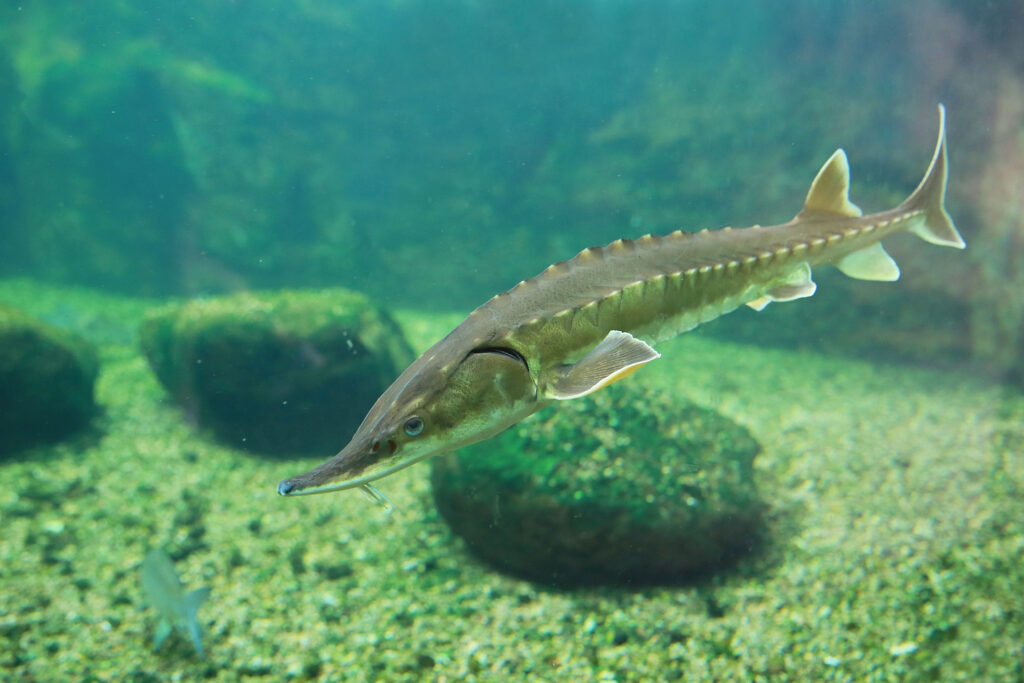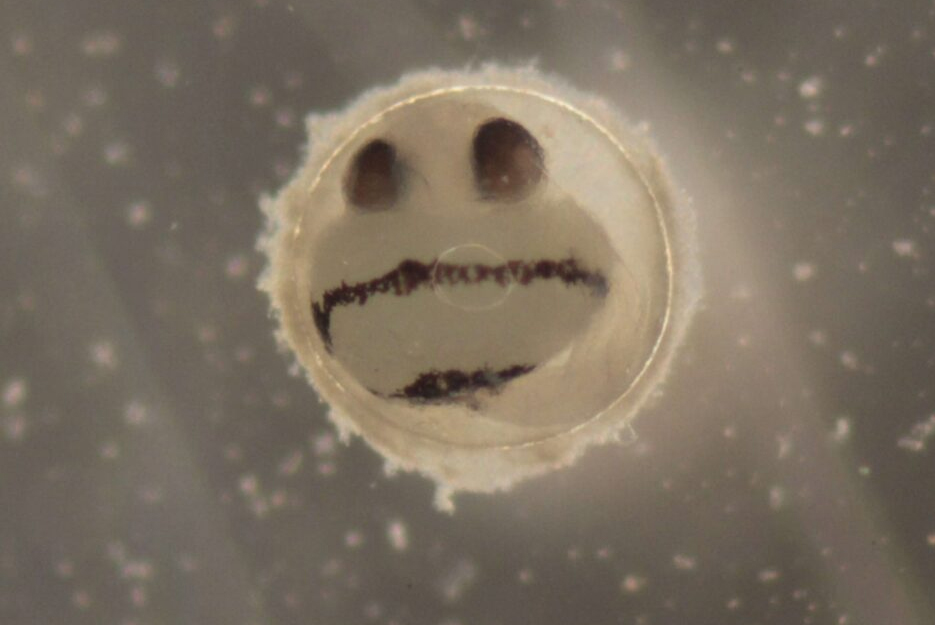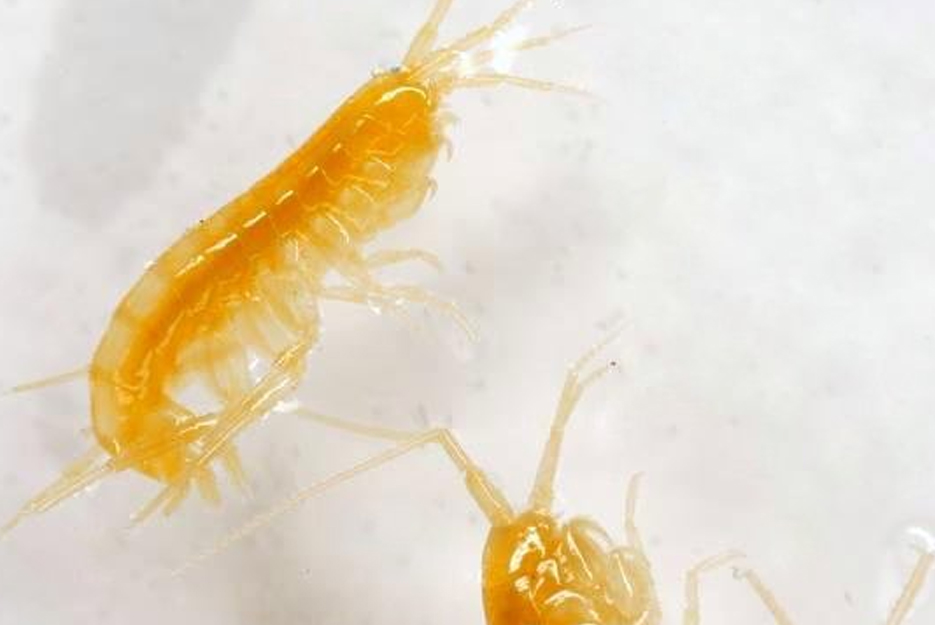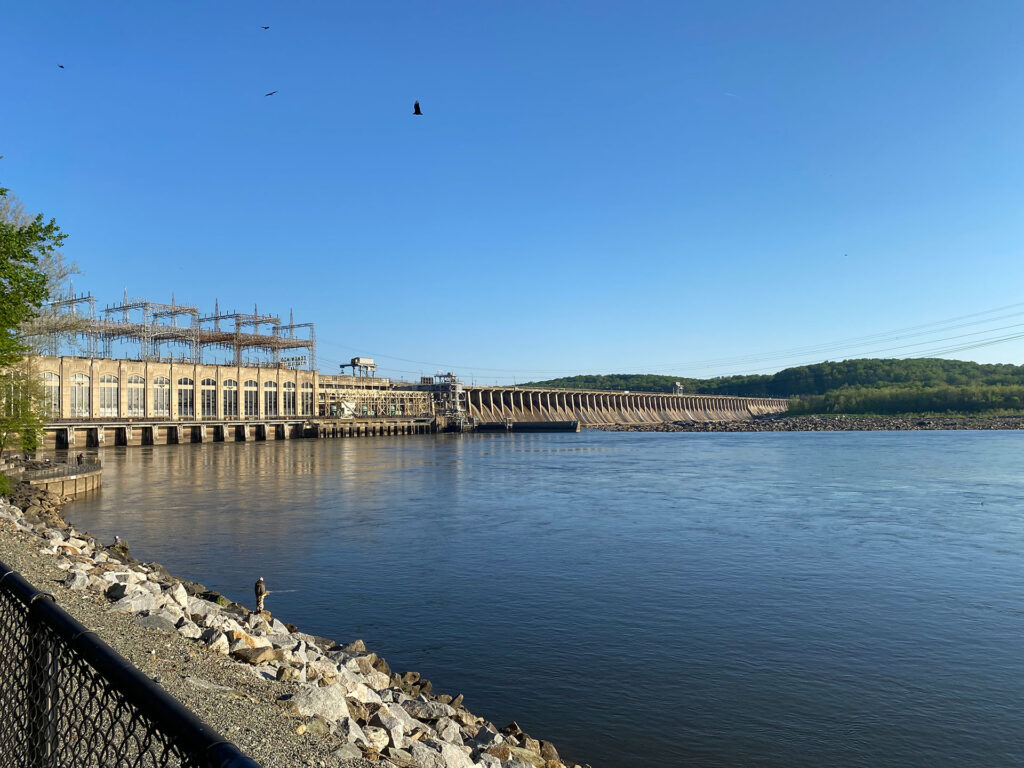At a glance the mysterious sturgeon looks like it’s been borrowing bits from other animals—it has five rows of bony scutes like an alligator; has a heterocercal (tall-on-the-top) tail fin like a shark; and it has sensory barbels on its face like a catfish. But it isn’t related to any of those organisms, and its lineage predates them all.
Sturgeon are one of the oldest families of fish alive today. The oldest sturgeon appear in the fossil record over 94 million years ago, and the relatives that preceded them split off from all other fish groups even earlier than that. They haven’t changed much since then, earning them the term “living fossils,” and they look the part with their dinosaur-like armored bodies and large size. The largest sturgeon species can weigh over 1,000 pounds and grow up to 22 feet long, though a more average sturgeon size is 7-10 feet. (Our local Sturgeon, the Atlantic Sturgeon, can reach 16 feet!) Large sturgeon are probably responsible for some infamous lake monster sightings!
Sturgeon skeletons are mostly cartilage, but they aren’t actually cartilaginous fishes—a term reserved for the group that includes sharks, skates, rays, and chimeras. That ancient group, the Chondrichthyes, started with cartilage and stuck with it, but the ancestors of sturgeon had regular ossified (bony) skeletons: They just ditched the bone tissue and went back to cartilage. Scientists aren’t sure why this happened, but cartilage has its benefits—it’s more flexible and less fragile.
Most, but not all sturgeon, are anadromous: They live in the ocean as adults and migrate up into fresh water only to spawn. (Salmon are another fish famous for being anadromous, but salmon don’t survive spawning while sturgeon swim back to the sea.) The newly spawned sturgeon stay in the river until they are juveniles, at which point they also migrate out to sea. Going from salt water to fresh water and back again is a big deal, since many fish species can’t handle large changes in salinity. Even sturgeon that spend their whole lives in fresh water migrate, going from lakes to rivers (making them potamodromous instead of anadromous).
Unfortunately, sturgeon are not just famous for being an ancient species; they’re also famous for being the world’s most threatened one. Almost two-thirds of all sturgeon species are critically endangered on the IUCN Red List of Threatened Species—more than any other taxonomic group. Sturgeon around the world have been over-harvested almost to extinction, partly for meat, but mostly for their eggs, which are sold as caviar. And because caviar is specifically unfertilized sturgeon roe (eggs), female sturgeon are killed to harvest them, so populations have plummeted.
Now there are protections in place, but the damage was done, and sturgeon are still on a slow and perilous road to recovery. Sturgeon are amazingly long-lived—they can live to be over 100 years old! But that means they are slow to reproduce. It takes years for sturgeon to reach reproductive maturity (for many species, over a decade), and females can usually spawn only every few years. Since sturgeon must migrate to reproduce, man-made barriers across rivers can prevent them from spawning, and pollution and habitat loss in rivers can also be devastating.
Normandeau has decades of experience monitoring these sensitive species, both as tiny larvae and as enormous adults. The sturgeon species we are most familiar with here in the Bedford, NH Lab are the Atlantic Sturgeon and Shortnose Sturgeon, but other Normandeau teams around the country have also done work with Lake Sturgeon and Shovelnose Sturgeon. We are committed to doing our part in making sure these amazing, ancient fish have the chance to survive and thrive again!
Please Note: Sturgeon are an endangered species and cannot be handled in the wild without a permit. Normandeau Associates, Inc. always meets necessary compliance criteria when working with sturgeon in the field. To learn more, please visit: https://www.fisheries.noaa.gov/permit/esa-scientific-research-and-enhancement-permits



